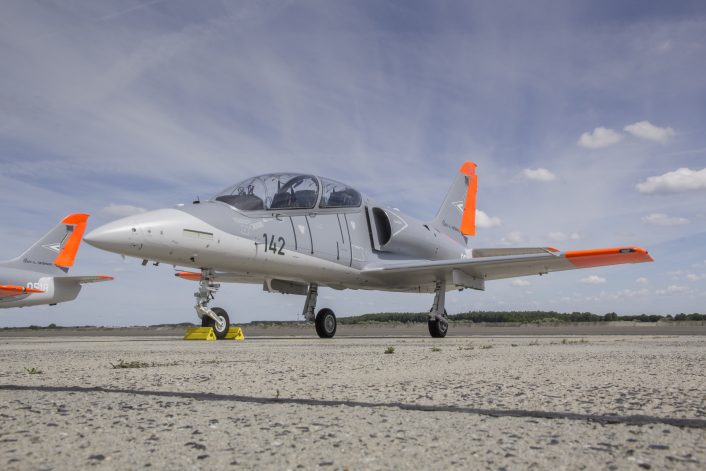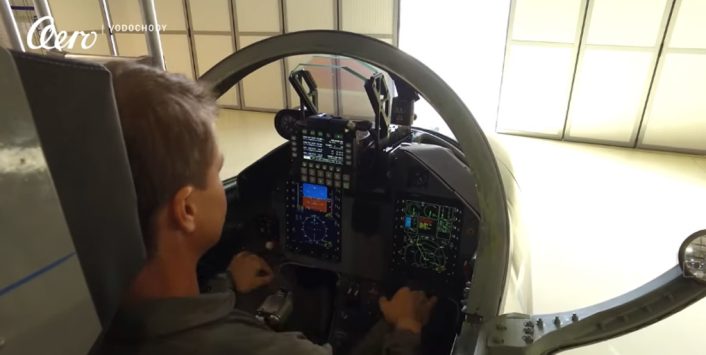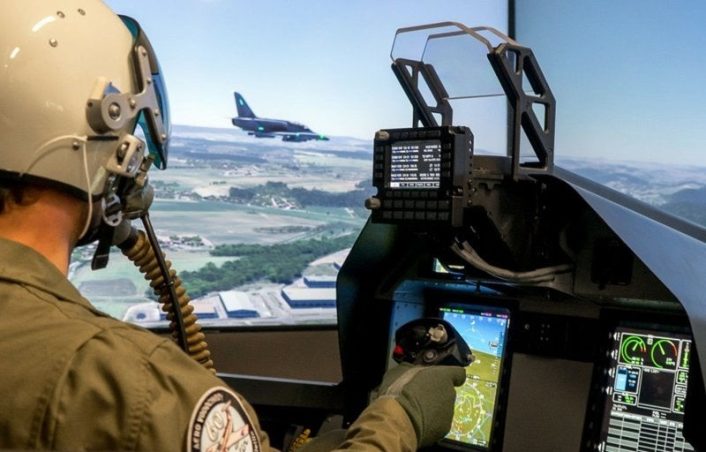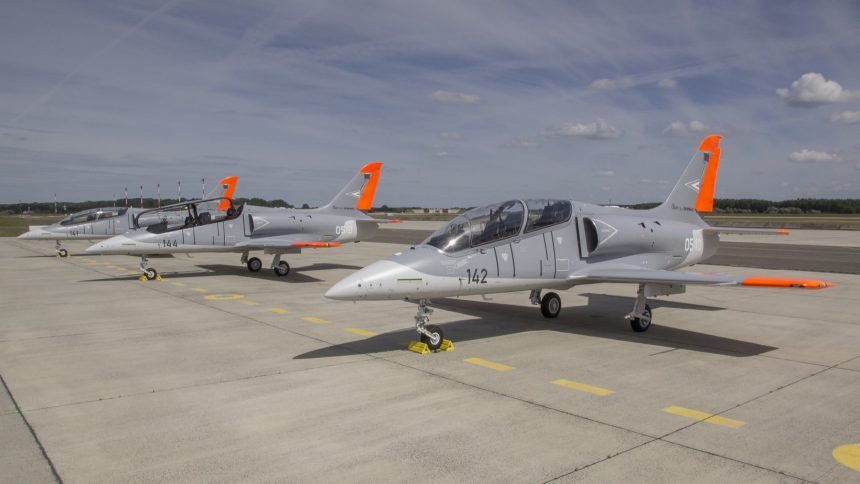The Hungarian Air Force received the first three L-39 Skyfox aircraft out of a total order of 12 signed in 2022, of which four will be in a reconnaissance configuration.
On May 30, 2025, the Hungarian Air Force received the first three L-39 Skyfox aircraft out of a total order of 12 signed in 2022. The Hungarian Air Force is planning to acquire eight aircraft in the trainer version and four aircraft in the reconnaissance configuration, with deliveries to be completed by 2028.
The arrival of the first three aircraft at Kecskemét Air Base marked a significant milestone for the Hungarian Air Force, re-establishing the capability to conduct advanced pilot training domestically. They will be assigned to the 101st Tactical Training Squadron of the “ Vitéz Szentgyörgyi Dezső” Aviation Brigade.
According to Dr. Zsolt Kutnyánszky, State Secretary for Force Development and Defence Policy, the event represents not only a new phase in Hungary’s air combat capabilities, but also underscores the country’s ongoing, strategic military development program. The new aircraft and associated training infrastructure will be integrated into the NATO Flight Training Europe (NATE) program.
To support this capability, Hungary has also developed a comprehensive ground-based training system, including modern flight simulators, mission planning and evaluation tools and a training support infrastructure tailored to the L-39 NG platform.
Inside the L-39 Skyfox
The Aero L-39NG (Next Generation), also known as L-39 Skyfox, is a modernized two-seater jet trainer and light combat aircraft based on the legacy L-39 Albatros, manufactured by Aero Vodochody. The aircraft incorporates significant upgrades over its predecessor.
Unveiled in the 2010s and entering service in the early 2020s, the L-39 Skyfox is powered by a Williams International FJ-44-4M turbofan engine with and improved efficiency compared to its predecessor’s Soviet era engine. The aircraft features a fully redesigned airframe with a declared empty weight of 3,280 kg and a Maximum Take Off weight of 5,800 kg, as well as an expected lifespan of 15,000 flight hours.
One of the most important upgrades is the glass cockpit which features moder digital avionics, including two multifunctional displays (MFDs), a head-up-display and hands-on-throttle-and-stick (HOTAS) controls.

The aircraft can be armed with a variety of weapons depending on the customers’ needs, notably the aircraft can be even equipped with an AESA (Active Electronically Scanned Array) radar mounted in a pod.
The main difference between the Trainer and the reconnaissance variant is highlighted by the integration of an MX-15 EO/IR (Electro Optical – Infra Red) pod that provides also laser tracking and designation capabilities.

The Skyfox has so far been acquired by Hungary, Vietnam and Czech Republic for advanced pilot training. The aircraft has steadily gained traction among private operators, such as the U.S. (United States) company Draken and the Portuguese Skytech.
The Pilot Training Program
The first group of Hungarian military pilots has recently completed an advanced training program conducted in the Czech Republic with the support of Aero Vodochody.
The training began with a comprehensive theoretical course, covering aircraft systems, performance, emergency procedures and mission planning. After passing the theoretical phase, the pilot progressed to the flying phase that was even including the instructor qualification training, enabling selected pilots to serve as flight instructors.
The flight training syllabus included night flying, use of the virtual training system (VTS) and advanced simulated combat scenarios, including formation flights and tactical operations.
The aircraft are part of a comprehensive training system that includes simulators, ground support systems and operational support. To date, three Hungarian instructor pilots and sixteen technicians have successfully completed training with Aero.

Viktor Sotona, President and Chairman of Aero Vodochody, commented:
“Hungary is a respected member of NATO (North Atlantic Treaty Organization) and places high demands on the capabilities of its armed forces, particularly the training of its fighter pilots. We are proud that the L-39 Skyfox has been selected as the platform for Hungary’s next generation of fighter pilots. Today’s handover marks the culmination of our joint efforts and opens a new chapter in our long-term partnership.”
Transition in Pilot Training Strategy
Since 2002, following the completion of their basic training in Hungary, Hungarian military pilots have continued their advanced flight training abroad, primarily through the NATO Flying Training in Canada (NFTC) program. This initiative, hosted by the Royal Canadian Air Force, provided comprehensive intermediate and advanced training utilizing aircraft such as the Harvard CT-156 (Canadian designation for the T-6A Texan II) for the intermediate training and the CT-155 Hawk for the advanced training.
However, with the phase out of the CT-155 Hawk a strategic shift has occurred. In September 2024, Hungary formalized an agreement with the Italian Air Force to train its pilot in Italy.
The agreement provides the opportunity for Hungarian Pilots to attend military pilot flight training courses both at Lecce Galatina Air Base and at Decimomannu Air Base.
Thanks to Benedek Levente for the additional details and images. Make sure to visit his Combatant Blog for more!









